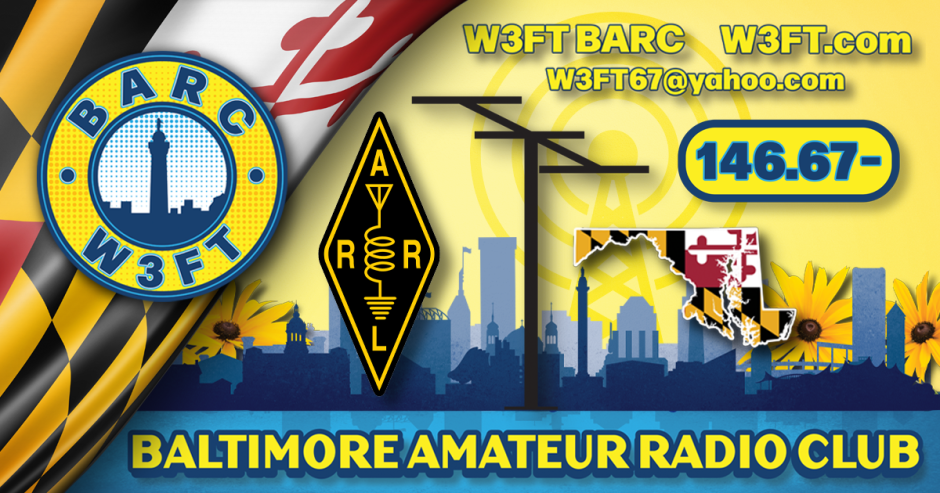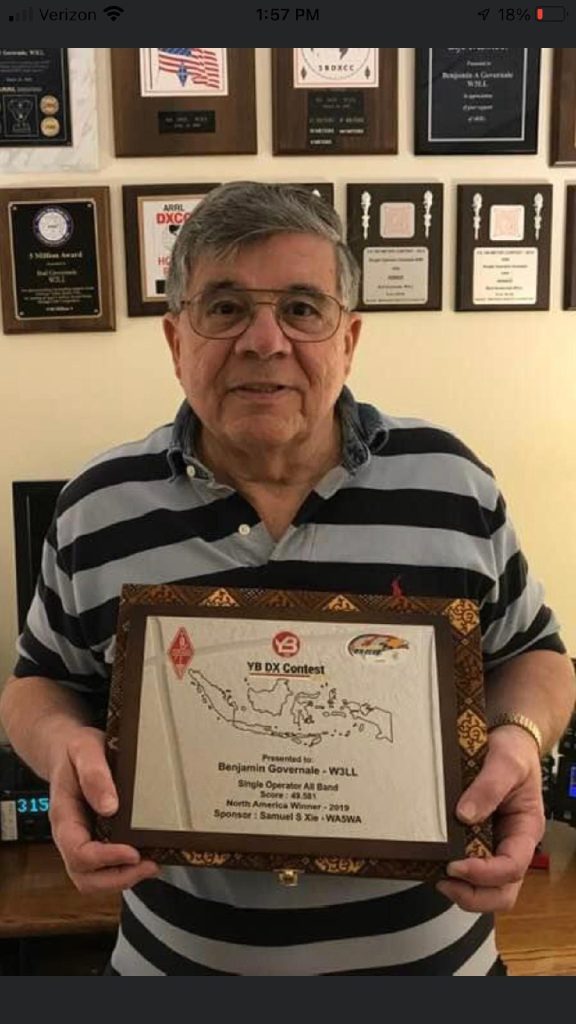
So how did a kid from Brooklyn, N.Y. get involved with amateur radio.
I was a resident student at my high school in the upper reaches of the Bronx. That means I lived there along with the Marist order of teaching Brothers.
Brother Felix had his ham station set up in the rear of the physics classroom. Each afternoon he would get on the air and talk to the world of ham radio operators using both voice and Morse Code.

He noticed that I took an interest in what he was doing and so became my mentor. He taught me all that I needed to get my FCC license and the rest is history.
Off to college in Brooklyn (Pratt Institute School of Engineering) where I noticed a small sign on a stairway leading up to the attic of the engineering building. The arrow said W2NOD.
Took awhile to find the faculty advisor who said the club was dormant for quite a few years and handed me the key to the room in the attic.
Cleared out the cobwebs to see a Hammarlund HQ170 receiver and a surplus transmitter.
Advertised the club in the school newspaper and eventually grew it to a dozen participants. Some licensed and many not licensed. Initiated code and theory classes. Applied to the Student Government for funding and recognition of the revitalized club. I became the new president and was recognized by the student body at the Student Union.
One day the faculty advisor Art Sideman, a licensed ham, came by with exciting news. An alumnus gave his son a complete Collins S-3 line station to develop interest in ham radio. That interest never materialized so the Alumnus donated the station to our nascent college club.
More money from the Student Government was forthcoming for new antennas on the roof of the engineering building.
At the same time, I began building my WB2OIV station at my grandmother’s Brooklyn row house.
The Hy-Gain Th6 antenna was placed on the roof atop a ham M rotor mounted atop a 21 foot guyed water pipe using the help of college club members. The antenna was larger than the row house and immediately generated RFI interference complaints that ended when I showed the complainants that the antenna cable had not yet been connected. The 40M and 80M inverted Vee’s did double duty as guy lines for the water pipe.
My Collins 73S-3 receiver from Brooklyn was purchased at Uncle George’s Ham Radio Store in Baltimore before I got my KN3OGS license. The Collins 32S-3 transmitter, 516F2 Power Supply, 312B4 Station Control and SM2 Mic were purchased during the annual Harrison Radio George Washington President’s birthday sale. Had to get there early before the line formed around the block and ensuing mad dash when the doors opened. Harrison Radio was located near Radio Row where the World Trade Center was built. The Henry 4-K floor standing amplifier looked like the Collins 30-S1 and was the final piece de resistance. It was a manual tune conventional 1500W output single tube amplifier. But back then it was input power that was measured.
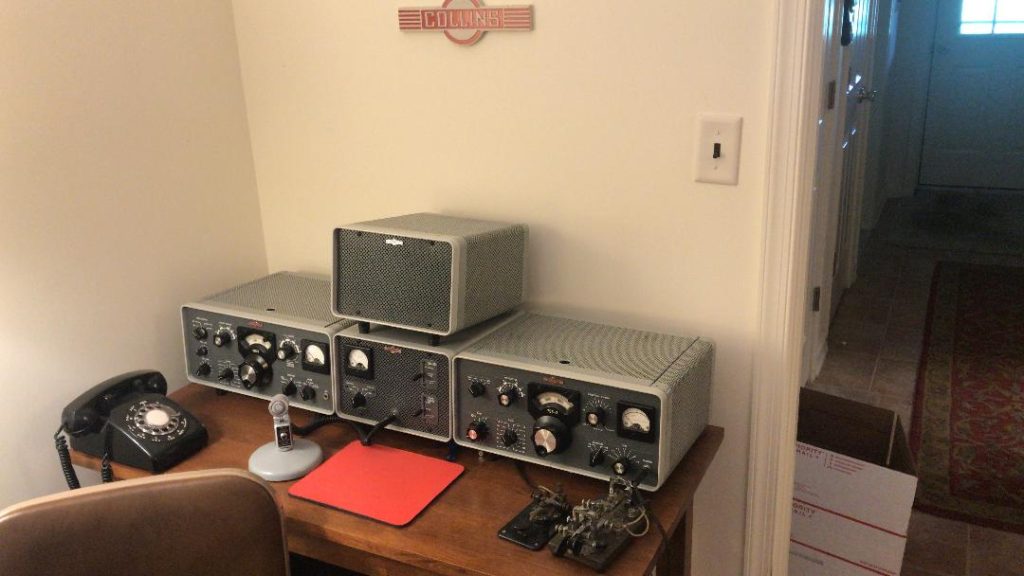
The ARRL November Sweepstakes was the first entry into the world of contesting by me and the invited club members participating. We had a station operator, a paper multiplier checker, a dupe sheet maintained by another member. A fourth member was doing the logging. This was before the days of computers and the N1MM contest program.
My major focused on communications and satellite multiplexing.
So, it was a natural to join Bendix Communications located almost within walking distance from my parents’ Hillendale home.
But two years later I was scheduled to be transferred to Newport News Virginia. At that time NASA was cutting back and engineering jobs were non-existent. Engineers were greeters or sweeping floors at Home Depot.
I was fortunate in getting the transfer but knew Newport News as a transient military town from my military experience.
So, guess what? I walked up the hill to Black and Decker and became a power tools engineer. Never in my wildest dreams would I ever consider myself a power tool engineer. I had zero interest in manual labor using power tools. But 32 years later and much enjoyment, with assignments all over the world including the north pole at Prudhoe Bay, I took an early retirement package to better enjoy more contesting time.
Let’s go back and look at military experiences.
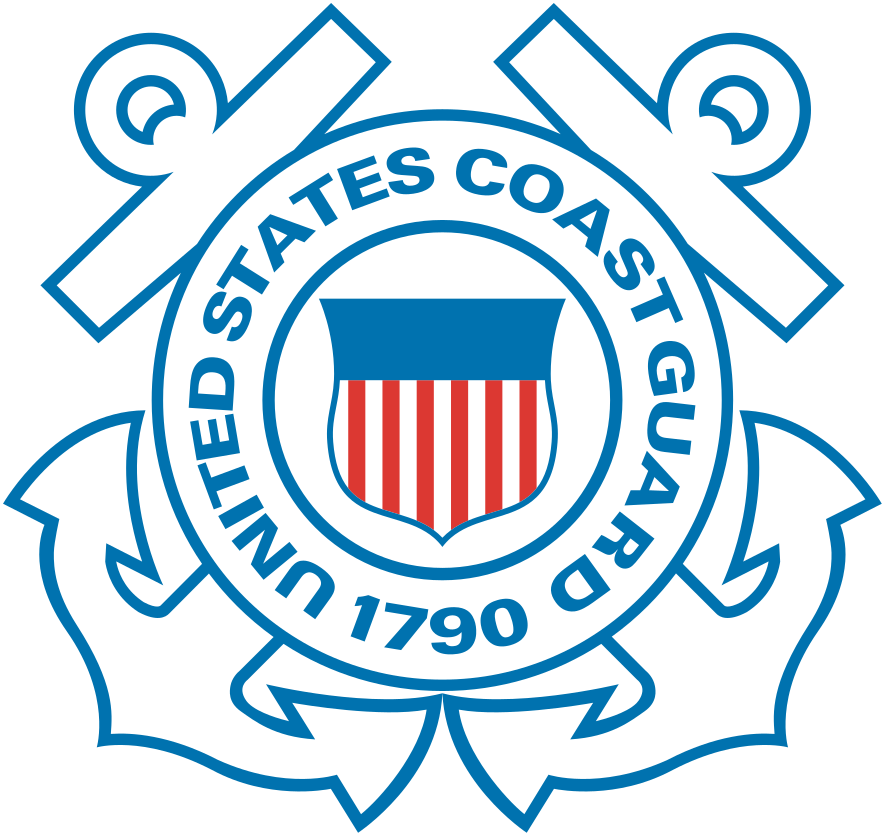
I used to take my bike in Brooklyn, where I grew up, onto the pedestrian walkway bridge over the Belt Parkway to a bench overlooking the entrance to New York harbor at Gravesend Bay. At that time, before the Verrazano Bridge, New York harbor was a mecca of ship transits. I took binoculars and references of country colors painted on the stacks or flags to identify each ship’s nationality. Seagoing was in my blood.
My uncle would take me fishing near the Scotland lightship at the entrance to New York harbor. One day the boat would not start. The coast guardsmen on the lightship notified station New York to send out a patrol boat. A 42 foot patrol boat manned by what looked like a group of three teenagers professionally got us tied up at the New Jersey highlands. That was the moment that I knew my future would include the Coast Guard.
I was going to college at the time and wanted to enlist in the reserve program but it entailed a two year wait. God forbid that I was drafted into the army. But the Cuban Missile Crisis intervened and my waiting time was cut very short. So, it was off to Boot Camp in Cape May, New Jersey.
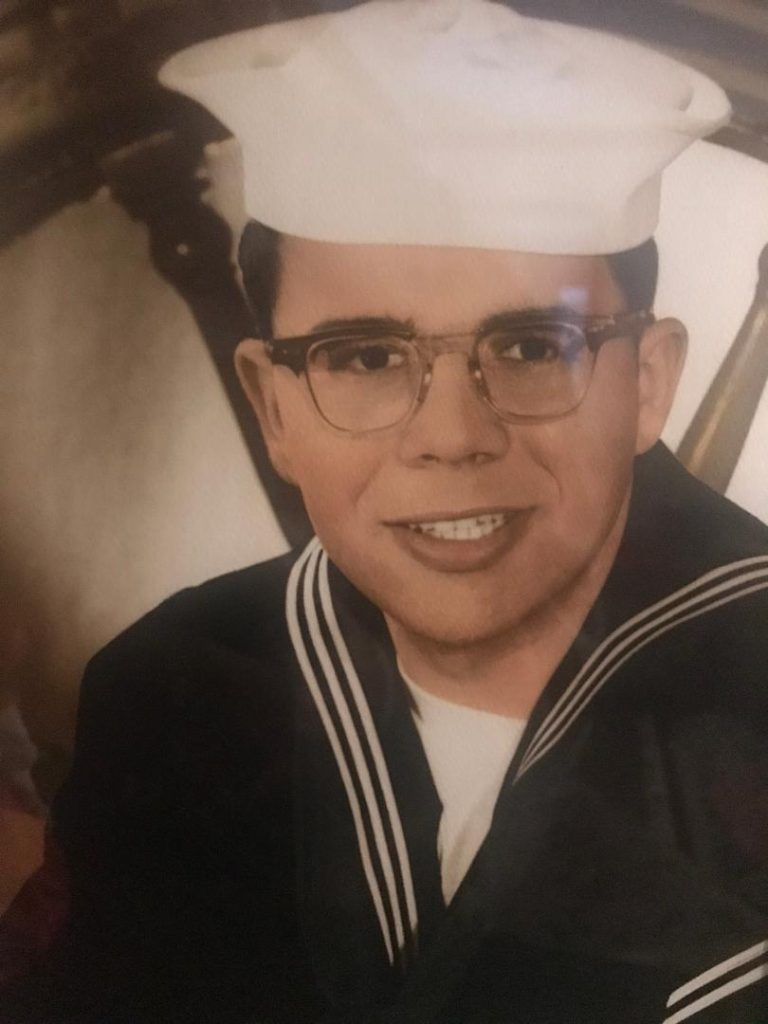
Being proficient in Morse Code flashing light as a residual benefit of ham radio, I was a ringer in the competition to earn weekend leave. This ability was recognized during the specialty selection process. For me I was to become a Radioman and was sent to Norfolk Virginia Naval Operations Base Fleet Training Center Radioman School. After three months of radioman school it was off to Curtis Bay.
With the help of ham radio, I made it to Chief Radioman in five years. But my mentors advised me to wait for the eight year mark before applying for a Direct Commission. This would ensure a 20 year retirement eligibility prior to any chance of being passed over twice at the selection boards. It was up or out without retirement if prior to 20 years of service.
I retired as a Commander after 30 years of service. One of my better assignments was Controller Atlantic Area under Admiral Costello. I had responsibility for Search and Rescue including everything from the East Coast of the USA to Ramstein Germany with access to every CG Vessel and Aircraft within the Third Coast Guard District. Nothing better than to be located on Governor’s Island overlooking the New York skyline.
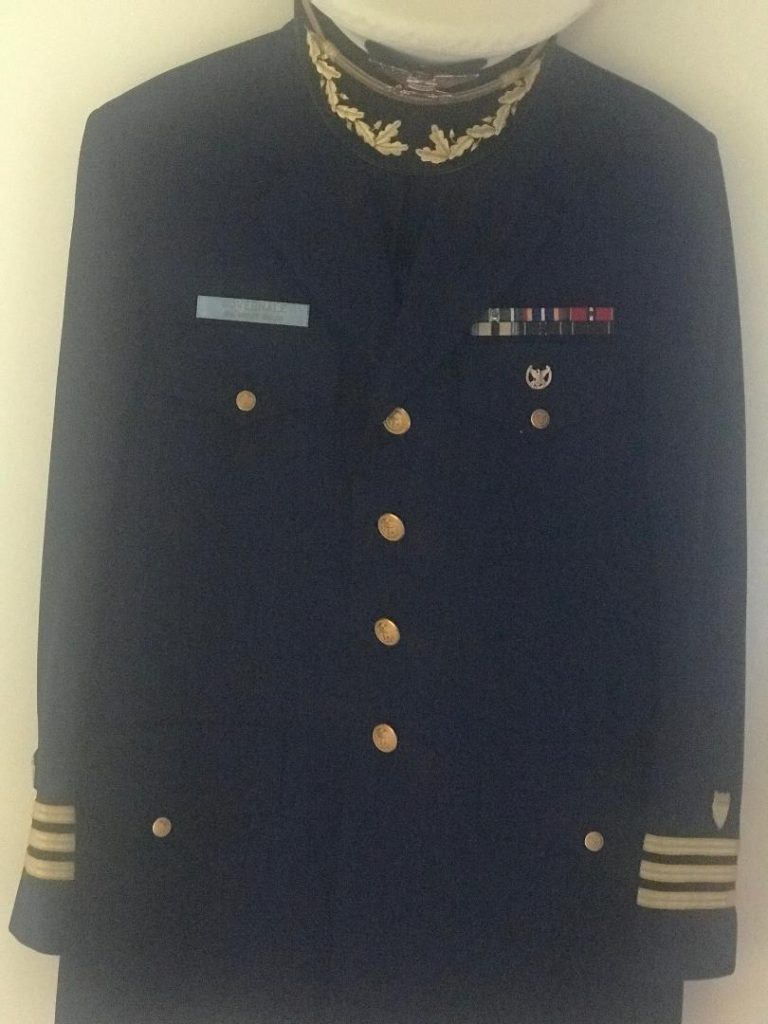
The next assignment was back to Curtis Bay where I wore multiple hats: Harbor Master, OIC Station Curtis Bay, Group Baltimore Commander, Pollution Commander. The hardest part was learning the colloquial names of every place north of the Potomac River. As Group Commander Baltimore, all of the Coast Guard Stations north of the Potomac River reported to me.
During the interim I enjoyed every bit of the Coast Guard. My first command was Commanding Officer Station Stillpond located in the upper reaches of the Bay prior to the entrance to the C&D canal. An idyllic laid-back command. The last assignment was Commanding Officer of Yorktown, the largest command east of the Mississippi River.
Back to Ham Radio.
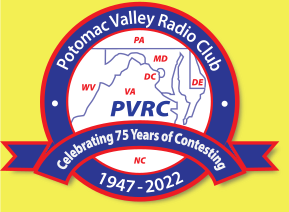
Since the beginning of time, I always wanted to join The Potomac Valley Radio Club but could never find it. Even went for drives along the Potomac River looking for antennas. Many years later I saw a notice about meetings located in Frederick MD. I used to take my wife to Frederick to visit with her sister. Made the date coincide with the PVRC Fredrick Chapter meeting. At that meeting I was in awe of the icons of contesting including Gene Zimmerman W3ZZ, Fred Laun W3ZO, Frank Donovan W3LPL and many others. At the second meeting Ed K3IXD announced he was moving to South Carolina and that I was to become the new chapter chairman.
Unfortunately, a year later Ed, along with K3PP, was a passenger in a private airplane owned and piloted by a PVRC member. They were on their way to the Bahamas for a contest. Unfortunately, the plane on liftoff from the SC runway banked left and crashed into the woods killing all occupants.
I wished to run for elected office after ten years as NW Chapter chairman. Jim WX3B was asked to take my place as chairman after I won the secretarial election.
One of the secretarial duties was to submit to the ARRL a list of all members who reside within the circle limit for that contest.
I dreaded this because my predecessor failed to accurately submit a list that was not representative of those eligible to participate. A competitor club challenged our entry. The end result was our PVRC president had to forfeit a winning entry.
After another few years I became an elected VP followed by three years as a term limited president.
There were a few tumultuous years as President that needed to be carefully dealt with.
Chapters from the southern outreaches of the circle felt that they were being ignored by the Washington leadership. So the one and only PVRC Christmas Party held at PJ Skidoos in Fairfax VA bit the dust. Too bad, because that event drew many members, Included a famous guest speaker and was the place where awards were presented to members. It also was the biggest source of donations to the club.
PVRC does not collect dues. It depends on the treasurer asking for member donations to meet the budget. The income from donations goes back to the members in the form of plaques and awards. Additionally, once a member always a member.
Presently I’m one of PVRC’s elected trustees.
PVRC is a club with the solitary purpose of winning radio contests. Therefore I always recommend that members also become associated with their local radio club for the purpose of giving back to the community or providing a public service.
This is a good segway to the Baltimore Amateur Radio Club.
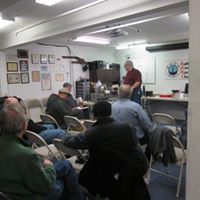
I tried to determine my year of entry into BARC but could only guess based on anecdotal memories.
However, I do possess a gold name tag dated 1997 for the 50th anniversary of BARC. So it’s been at least 27 years. But in reality much longer.
While driving past Calvert Hall College as a teenager I noticed a large gathering there. It turned out to be my first exposure to a hamfest and introduction to the BARC. That timeframe was likely 6o some odd years ago and predated my entry into PVRC.
There were many BARC hamfests later at the Timonium Fairgrounds. The largest east coast gathering of hams.
As part of public service, BARC provided communications to those running the Baltimore Marathon. I was fortunate to be the net control station for the team of BARC members positioned at strategic locations throughout the race course.
BARC didn’t have a home of it;s own at that time, just as PVRC still doesn’t have a home.
But the hierarchy of the club was considering creating a clubhouse. I wasn’t part of that leadership.
Coincidentally, at that time the Jacksonville Volunteer Firehouse was going to be reconstructed. BARC was offered a place there to call home. An outstanding location with the opportunity to grow membership from like minded communicators.
But the offer was refused for a rental in an industrial center in Reisterstown. This was my biggest regret. What I write here is only my personal opinion with no information as to what transpired within the leadership at that time.
Today I maintain a passive role within the club. Others do more than their fair share in maintaining the club and keeping it pointed in the right direction.
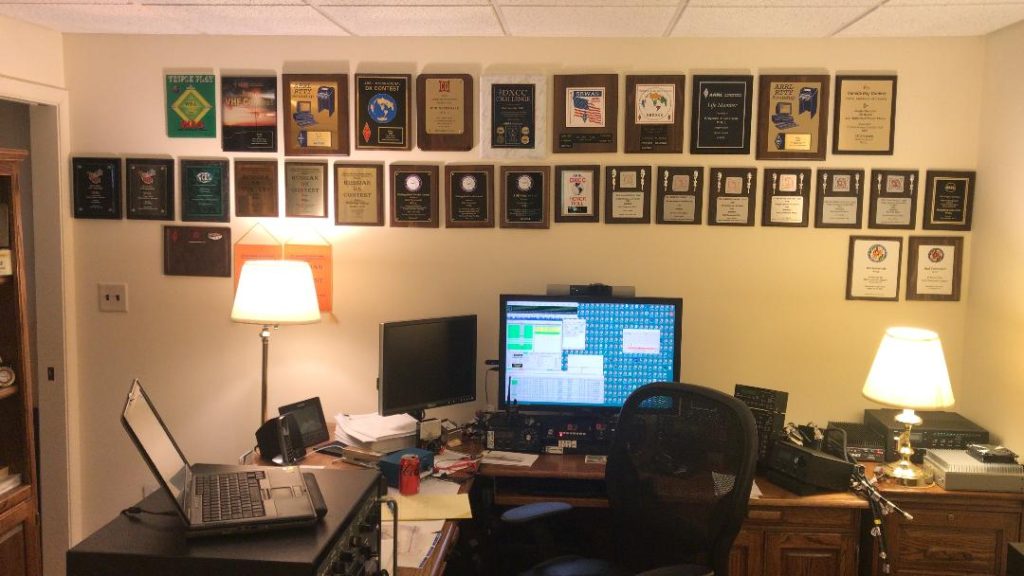
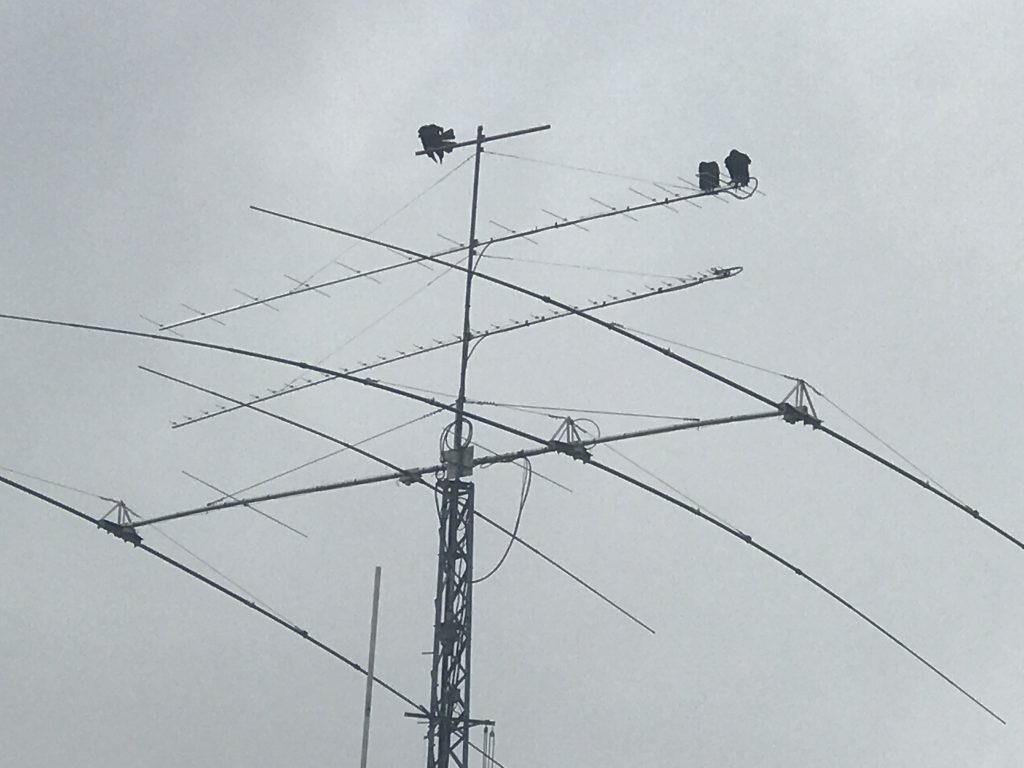
As a ham radio enthusiast I consider myself fortunate to be a member of Baltimore’s most prestigious radio club.
Thanks for reading es 73,
Bud W3LL
